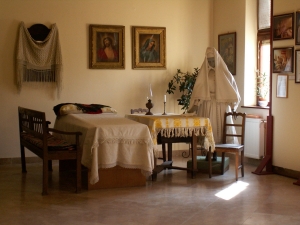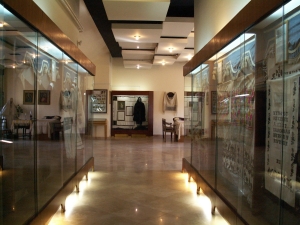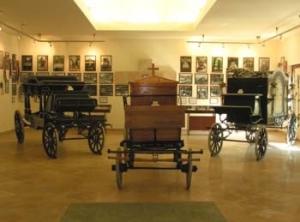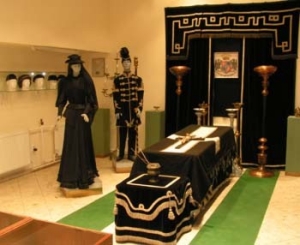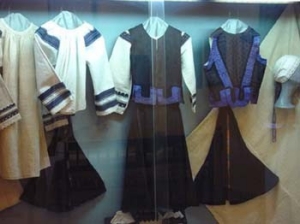Map
| Hotels
| Sights
| Wellness, Spa
| Travel Services
| Business Travel
| Programs
in VIII. kerület, BUDAPEST:
Hotel - Sight - Wellness, Spa - Travel Service - Business Travel
Address: 1086 Budapest, Fiumei út 16. - map 
Email: muzeum@btirt.hu
Web: www.btirt.hu
Phone: +36 (1) 323-5132
|
Other information:
The one and only Piety Museum of Hungary was established in 1991 by the Funeral Institute of Budapest Ltd.
In the first wing of the museum the folk art and ethnographycal material of the Carphatian basin can be found. The white colour remained in Csököly (Somogy county) in the form of the "white-mourning", which is famous internationally (world-wide). In this room the material of ethnographycal and folk art from Csitár (Slovakia), Szék (Transylvania), Csángó, Tápióság and Matyó can be seen too.
In the second room of the museum the glassed and coloumned carriages (hearses), many "Saint Michael horses", uniform of mourning hussar in the glass-cases, harness, embroidered horse-clothes, candlesticks and frogged and decorated sticks. On the main wall of the room, you can see the big funeral procession of Budapest in the XX. century and the pictures of the funeral of Lajos Kossuth. In this room, we display the reduced copy of the large-size painting of the "funeral of Jesus" by Árpád Feszty (1914). In the third room, we can see the mourning accessories, ecclesiastical clothes, mourning clothes of ladies and ceremony books.
In the fourth room, which is on the lower floor, there are the typical material relics of cemeteries as for example the wood coffins from the archeologycal excavation in the "whites church" from Vác, decorated coffin-tops, coffin from willow-wood from Szegvár, metalsarcophagus of crypt, rarely used hearturn, the complete selection of urns from Hollóháza and wooden crosses of the people.
In the fifth room, there are seasonal exhibitions. The planned exhibitions will be found on the website (www.btirt.hu/muzeum,html, www.nemzetisirkert.hu) of the Institute. You can choose which exhibition you would like to visit.
In the first wing of the museum the folk art and ethnographycal material of the Carphatian basin can be found. The white colour remained in Csököly (Somogy county) in the form of the "white-mourning", which is famous internationally (world-wide). In this room the material of ethnographycal and folk art from Csitár (Slovakia), Szék (Transylvania), Csángó, Tápióság and Matyó can be seen too.
In the second room of the museum the glassed and coloumned carriages (hearses), many "Saint Michael horses", uniform of mourning hussar in the glass-cases, harness, embroidered horse-clothes, candlesticks and frogged and decorated sticks. On the main wall of the room, you can see the big funeral procession of Budapest in the XX. century and the pictures of the funeral of Lajos Kossuth. In this room, we display the reduced copy of the large-size painting of the "funeral of Jesus" by Árpád Feszty (1914). In the third room, we can see the mourning accessories, ecclesiastical clothes, mourning clothes of ladies and ceremony books.
In the fourth room, which is on the lower floor, there are the typical material relics of cemeteries as for example the wood coffins from the archeologycal excavation in the "whites church" from Vác, decorated coffin-tops, coffin from willow-wood from Szegvár, metalsarcophagus of crypt, rarely used hearturn, the complete selection of urns from Hollóháza and wooden crosses of the people.
In the fifth room, there are seasonal exhibitions. The planned exhibitions will be found on the website (www.btirt.hu/muzeum,html, www.nemzetisirkert.hu) of the Institute. You can choose which exhibition you would like to visit.
|
|
Kegyeleti Múzeum - Hungary - BUDAPEST (Sight: Museum) |
Kegyeleti Múzeum - Ungarn - BUDAPEST (Sehenswürdigkeit: Museum) |
|
|
||
|
Tuesday, 22. April 2025. - 18:27:14 |
||

